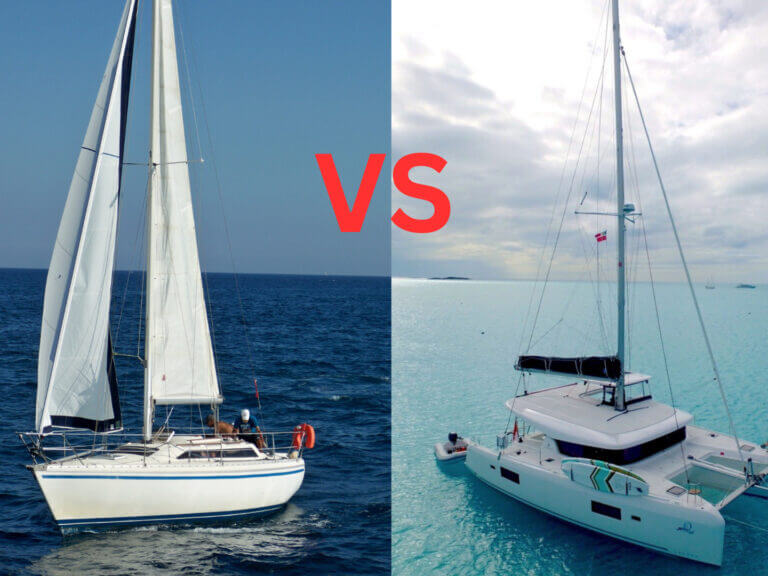How Much Does Biofouling Slows Down your Boat?
Are you wondering how much biofouling can impact the performance of your sailboat?
The amount of how much biofouling slows down a sailboat depends on various factors, such as the type of boat, its size, and the severity of the biofouling. On average, a sailboat with a heavily fouled hull can experience a reduction in speed of up to 30%.
In this article, we’ll discuss how much biofouling slows down a sailboat and provide you with some tips on how to prevent it.
What is Biofouling?
Biofouling is a common issue for boats that spend a lot of time in the water. It is the accumulation of organisms, such as barnacles, algae, and other marine organisms, on the hull and other underwater parts of the boat.
How Much Does Biofouling Slows Down a Sailboat?
Biofouling can significantly slow down a sailboat’s speed and performance. The amount of speed reduction depends on several factors, including the type and amount of fouling on the hull, the boat’s size and shape, and the wind and sea conditions.
Biofouling can reduce a boat’s speed by up to 10% in moderate fouling conditions. However, in heavy fouling conditions, the speed reduction can be as much as 30%. This means that a sailboat that would normally travel at a speed of 8 knots could be reduced to a speed of 7.2 knots in moderate fouling conditions and just 5.6 knots in heavy fouling conditions.
To put this into perspective, a sailboat that typically takes 10 hours to travel a distance of 80 nautical miles could take up to 14 hours or more to cover the same distance in heavy fouling conditions. This can lead to increased fuel consumption, longer travel times, and reduced performance.
You can read a detailed article at the international maritime organization imo.org
Factors That Affect Biofouling
The rate at which biofouling accumulates on a sailboat depends on several factors, including:
Water Temperature
The water temperature can have a significant impact on the rate of biofouling growth. Warmer water temperatures tend to promote faster growth of marine organisms, which can lead to more rapid fouling of the boat’s hull.
Salinity
Salinity levels can also play a role in the growth of biofouling. Some marine organisms prefer higher or lower salinity levels, which can impact the type of organisms that grow on the boat’s hull.
Water Flow
The flow of water around the boat can also affect the rate of biofouling. Areas of the boat that experience less water flow may be more prone to fouling, as the water is stagnant and provides a good environment for marine organisms to grow.
Boat Use
The amount of time a boat spends in the water can also affect the rate of biofouling. Boats that are used frequently tend to experience less fouling than boats that are left in the water for extended periods without use.
Hull Material
Different hull materials can also affect the rate of biofouling. Some materials, such as copper, can help to prevent fouling by releasing copper ions into the water, which are toxic to marine organisms.
Preventing Biofouling
Preventing biofouling is an essential part of maintaining your sailboat’s performance. Here are some tips on how to prevent biofouling:

Use Antifouling Paint
Antifouling paint is designed to prevent the growth of marine organisms on the boat’s hull. The paint contains chemicals that are toxic to marine life, which prevents organisms from attaching to the hull.
Regularly Clean the Hull
Regularly cleaning the hull can help to remove any biofouling that has accumulated on the boat. Scrubbing the hull with a soft brush and a mild detergent can help to keep the hull clean and prevent further fouling.
Install Zinc Anodes
Zinc anodes can be installed on the boat’s hull to help prevent biofouling. The anodes release zinc ions into the water, which are toxic to marine organisms.
Lift the Boat Out of the Water
Lifting the boat out of the water when not in use can help to prevent biofouling. When the boat is out of the water, marine organisms cannot attach themselves to the hull.
The Impact of Biofouling on the Environment
Biofouling not only impacts a sailboat’s performance but can also have negative environmental consequences. Fouling organisms can be transported to new locations when boats travel from one body of water to another. This can lead to the introduction of invasive species, which can disrupt native ecosystems and cause ecological damage.
Additionally, antifouling paints and other chemicals used to prevent biofouling can also have harmful effects on marine life. These chemicals can leach into the water and cause pollution, which can harm fish, plants, and other organisms.
Conclusion
Biofouling is a serious issue that can significantly impact a sailboat’s performance and the environment. Preventing biofouling is crucial to maintaining a boat’s speed and reducing its environmental impact. By using antifouling paint, regularly cleaning the hull, installing zinc anodes, or lifting the boat out of the water, sailors can help to prevent biofouling and keep their boats in top condition.
Want to know more about how sailboats work? Have a look at my other posts
FAQs
How often should I clean my sailboat’s hull to prevent biofouling?
It is recommended to clean the boat’s hull at least once a month to prevent biofouling.
Can biofouling damage my sailboat?
Yes, biofouling can cause damage to the boat’s hull and other underwater parts. It can also lead to reduced performance and increased fuel consumption.
Is biofouling a concern only for sailboats, or does it affect other types of boats as well?
Biofouling is a concern for all types of boats, including sailboats, powerboats, and commercial vessels. The impact of biofouling on a boat’s speed and performance is directly related to the amount and type of fouling present on the hull.







